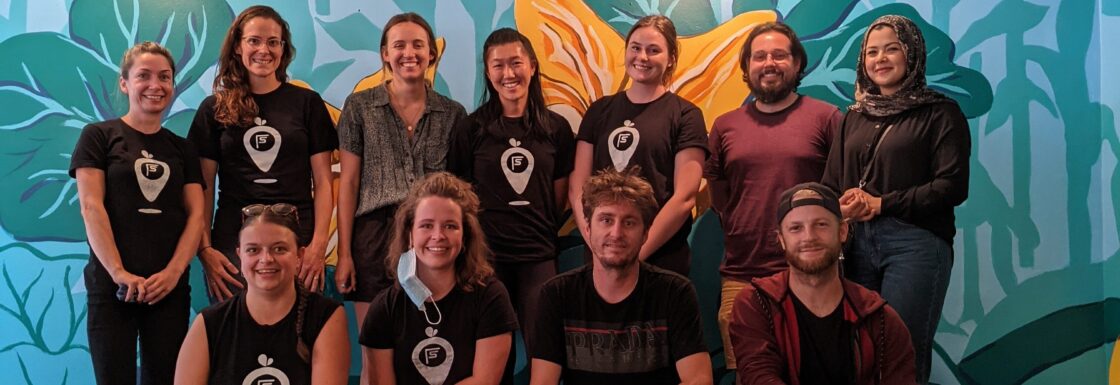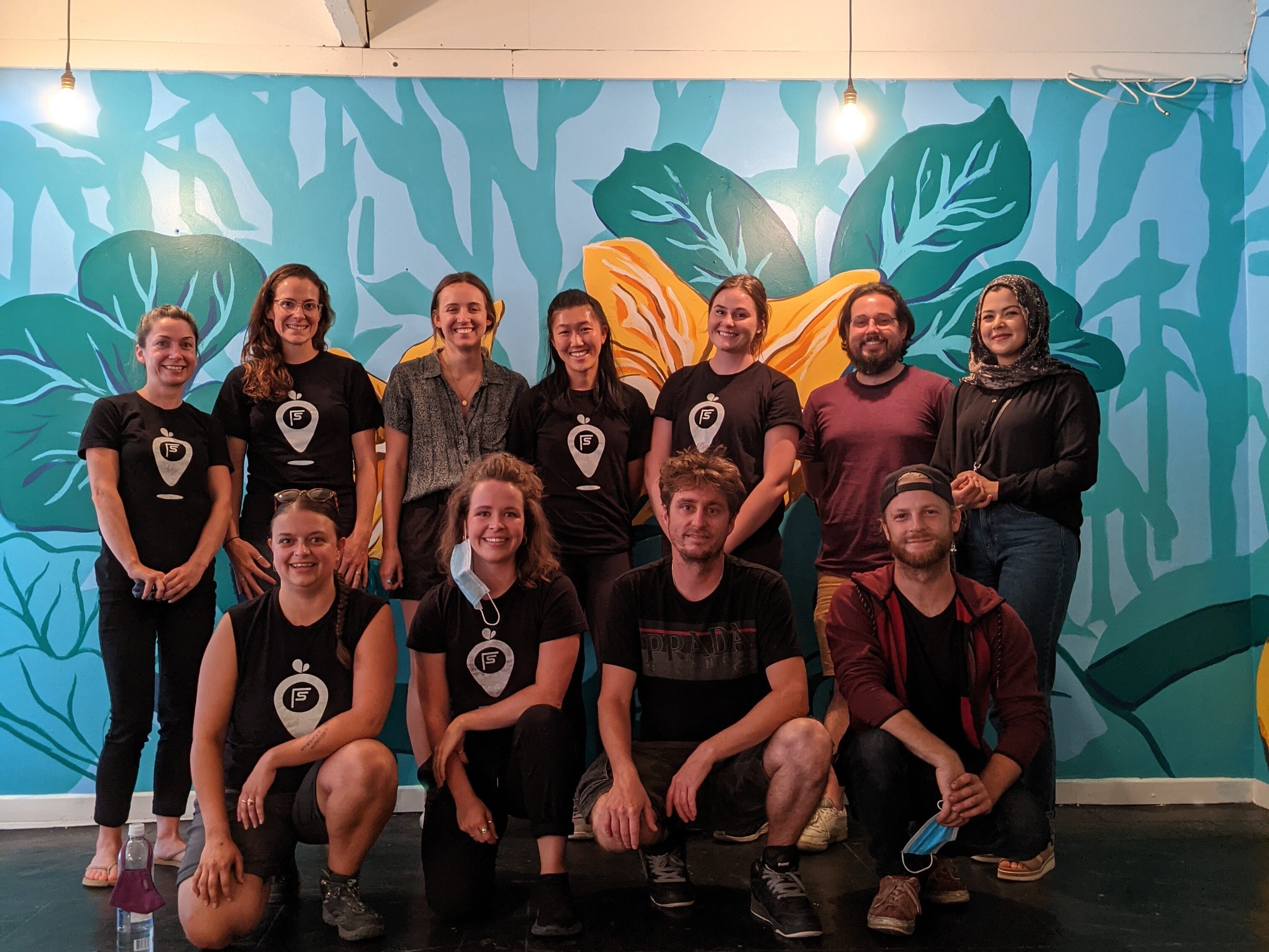Growing a Start-Up Food Rescue Charity

3 Lessons from former Food Stash Executive Director, Julia Hunter
In 2019, I joined Food Stash Foundation – a registered food rescue charity founded in 2016, as their Executive Director. In a nutshell, Food Stash operates as a connector between surplus food, organizations, and individuals; rescuing perfectly good food from going to waste and redistributing it to others through various logistical programs. As a Dietitian by trade, my passion for food security and community development drew me toward this opportunity to do good for people and the planet. In this article, I share 3 key lessons that I took away from my experience growing a start-up charity:
The Why + Art of How
From rising food insecurity rates across Canada, to the sheer quantity of valuable resources along the food supply chain wasted, and the extent to which the current system is designed to extract profit at the expense of people, disproportionately those within marginalized communities, and the planet – Food Stash was born out of an idea to combat the evolving and wicked problems we face as a society and generation. These issues intersect one another and have been creating systemic disparity for decades.
Our dual mission of bridging the food insecurity gap while simultaneously reducing the environmental impact of food waste gave us scope to explore the intersectionality of the social and environmental factors that make up the current food system – and question it. Understanding the ‘why’ of our mission and then leaning into the ‘how’ empowered us to begin to conceptualize new and innovative ways forward. We became curious and asked questions like, “how can we grow the food security side of our mission while also staying true to our sustainability and environmental values?.” In other words, “how can we talk the talk and walk the walk?”
Answering this question seemed almost impossible, financially and logistically, given the heavy reliance on fossil fuels within the current transportation industry. However, as we started posing this same question in conversations with others, connections, ideas, and the ‘how’ started coming together organically. By the Fall of 2020, we submitted our first grant proposal to the municipal government that outlined a pilot concept for a new green initiative: delivering our rescued food boxes to households via electric cargo trikes.
To myself and the team at Food Stash Foundation, this program was (and became) a living and breathing expression of our mission wrapped into one initiative – a true win-win-win that allowed us to scale rescued food box delivery to households without compromising on our environmental values. I believe having an open mind and a willingness to shift into the possibilities of asking ‘how’, we’re able to design a way forward that is creative, progressive, and solutions-focused. Though it seemed daunting and sometimes impossible, pursuing these ideas, even when they weren’t perfect, gave us the confidence and momentum to continue asking questions like, “how can we best serve our community?” and continue to create holistic and actionable ideas.

(Right): Each Rescued Food Box is packed with close to 30 pounds of perishable rescued food including produce, protein, and dairy products.
Essence, Storytelling, Collective Impact
I was lucky to have joined an organization in its start-up phase that already had a very strong sense of community spirit. I couldn’t quite believe the level of commitment and joy despite the fact that we were such a new and young organization with not a ton of visibility (How did these individuals even find us? Why did they keep coming back?). Weekly Sunday volunteer sessions were always packed, sometimes with over 15 individuals who would stay for hours making sure food was properly sorted and ready to be packaged up and delivered to families later that week.
We realized that by defining this essence, “What makes you unique? What is your purpose? What are your core values?” and making it tangible, we could strengthen our identity as an organization, build trust with the broader community, and ultimately drive our mission forward. We wanted to attract others to join our cause and collaborate with us, not because they simply liked our brand or mission, but because they could see it, taste it (yes, rescued food does indeed taste like… food!), experience it, and feel it – even from the outside looking in.
One of the biggest undertakings during 2019 was designing a way in which we could convey Food Stash’s story to bring our essence to life. We tested, trialled, scrapped, and re-tested various tracking systems to quantify the impact of the food we were rescuing and redistributing (“What makes you unique?”), we launched a blog series specifically dedicated to elevating the stories of our program participants (“What is your purpose?”) that would later go on to highlight volunteers, staff members, and individuals from the community, and we launched our first-ever strategic plan that laid out the framework of what we were going to prioritize based on what was important to us (“What are your core values?”).

(Right): Rescued food lines the shelves each week before being redistributed to other local community organizations and households across the city.
Being able to nurture this ‘essence’ and convey our story from multiple angles opened doors to; collaborations that advanced our mission; to partners that supported us to take on more food suppliers, to donors and successful funding proposals that enabled us to grow our internal capacity, to strategic partners that helped us track daily food rescue totals and a local company who leveraged their electric trike fleet to make our dream program a reality, to community members who joined our programs or donated their time, and to talented individuals who saw our job postings and applied to be a part of it. Within a year, we were growing at a rate that I hadn’t anticipated when I first started and the village that supported us to get there continued to expand and deepen. I had underestimated the power of this groundwork in essence and storytelling and in turn, what we were truly capable of when this was put into practice.
Resilience
The last and most important lesson of 2020 – resilience. Up until the pandemic, if asked, I probably would have said resilience is about problem-solving and overcoming adversity. Which sounds straightforward (and painfully cliche) on paper – but what did that actually mean for Food Stash on an organizational level? I learned that resilience started with people.
In the summer of 2020, we experienced significant turnover within our full-time driver positions (that were responsible for picking up surplus food from suppliers, dropping it off to partner charities, and returning the remaining food to our headquarters) – a labour-intensive role that became a passenger on the rollercoaster that was the food supply chain during the COVID-19 pandemic. As store shelves cleared in March, we experienced our lowest ever food rescue numbers. As store shelves re-filled and panic buying trickled off, we experienced our highest ever food rescue numbers, for months. It became clear that the old way of doing things wasn’t working for us anymore. At the same time, the needs of the community were changing.

This prompted us to start asking, “how can we make our roles sustainable?” and more broadly, “how can we design a culture and workplace that makes people want to stay?” I believe these are two of the most important questions any NPO leader needs to ask regularly, as the turnover rate in the nonprofit sector is no secret and sadly, no surprise. From asking those questions and engaging staff, we began to make changes – we actually scaled back daily redistribution routes by collaborating with other local organizations, we added support positions to manage and spread the increased workload, and we began creating our first employee handbook to standardize workplace policies and build structure. Individuals in these positions began to stay. Our food rescue impact doubled in that same year. Team members started bringing ideas forward to figure out how we could better meet the needs of the community – things like drop-in programs, educational programs, and inclusive food access projects started to take shape. Despite the chaos and uncertainty around us, we were thriving as a mission-driven organization and it wasn’t by accident.
When people are taken care of, the rest will always fall into place.

















